“Gene” Chen Jinhong was a pioneer of Chinese martial arts in the United States. He was one of the first to bring Chen Style Taijiquan to the west at a time when China was closed to outsiders and the art was largely inaccessible and unknown. I was fortunate enough to meet and then train with him for approximately five years, from 1996 till 2001. In relation to the importance of his contribution to the art at the time and the particular depth and quality of his teaching, precious little has been offered online about who he was, his history, and what it was like to learn from him. This essay is part of an effort to honor his art, and teaching and to express appreciation for his generosity and guidance.
Chen was born in Shanghai in 1938. His family later moved to Hong Kong and then eventually to San Francisco, where he taught Chinese martial arts classes.
 Chen had achieved ‘master’ status in Southern Praying Mantis—also known as Zhu Gar, or Zhu family gongfu—during his youth in Hong Kong. Zhu Gar is a Hakka (southern) system that is in fact not related to other mantis systems at all. According to Chen, the Zhu family changed the public name of their system in the interest of self-preservation, after facing persecution by the incoming dynasty of the day due to their family connections to the previous dynasty.
Chen had achieved ‘master’ status in Southern Praying Mantis—also known as Zhu Gar, or Zhu family gongfu—during his youth in Hong Kong. Zhu Gar is a Hakka (southern) system that is in fact not related to other mantis systems at all. According to Chen, the Zhu family changed the public name of their system in the interest of self-preservation, after facing persecution by the incoming dynasty of the day due to their family connections to the previous dynasty.
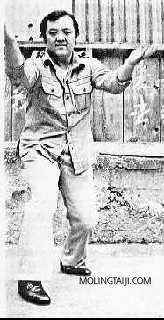
Chen apparently learned Zhu Gar in a location near where Bruce Lee was studying gongfu, and had met him as well in those days. Zhu Gar as he knew it was a system laser-focused on aggressive fighting and killing strikes. He was very proficient at it, with a highly developed “semi-internal” body method as he called it.
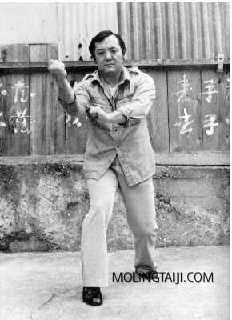
Very few people will ever be the martial arts obsessive Gene Chen was, and Zhu Gar, as effective as it is was not enough for him. As he told it, his grandfather was born in Chen Village. Early family exposure, as documented in the Wikipedia article linked above, fueled an exhaustive search and journey resulting in a rare and well-developed skill in Chen Taijiquan not otherwise seen in the US in his time. There were others in the very early 1980′s advertising themselves as teaching or knowing Chen Taijiquan in the US but Gene Chen was the only person at that time period who actually had formal instruction and lineage in the art
During his taijiquan journeys in China, Chen learned seriously from or had significant relationships with the following well-known and lesser-known teachers. This list is not complete, nor is it in necessarily in order. It is not always known how much time Chen spent with each of these teachers:
Fu Zongwen, Yang style Taijiquan,
Ma Yueliang, Wu Style Taijiquan,
The Brothers Ding, Wu Style Taijiquan, (Ding Jinshan (丁晋山) and Ding Deshan
(丁德山) disciples of Wu Gongyi **
Wang Peisheng, Wu Style Tajiquan,
Lei Muni, Disciple of Chen FaKe, Chen Style Taijiquan,
Tian Xiuchen, Disciple of Chen FaKe, Chen Style Taijiquan,
Chen Yuxia, daughter of Chen FaKe, Chen Style Taijiquan,
Hong Junsheng, Disciple of Chen FaKe, Chen Style Taijiquan,
Feng Zhiqiang, Disciple of Chen FaKe, Chen Style Taijiquan,
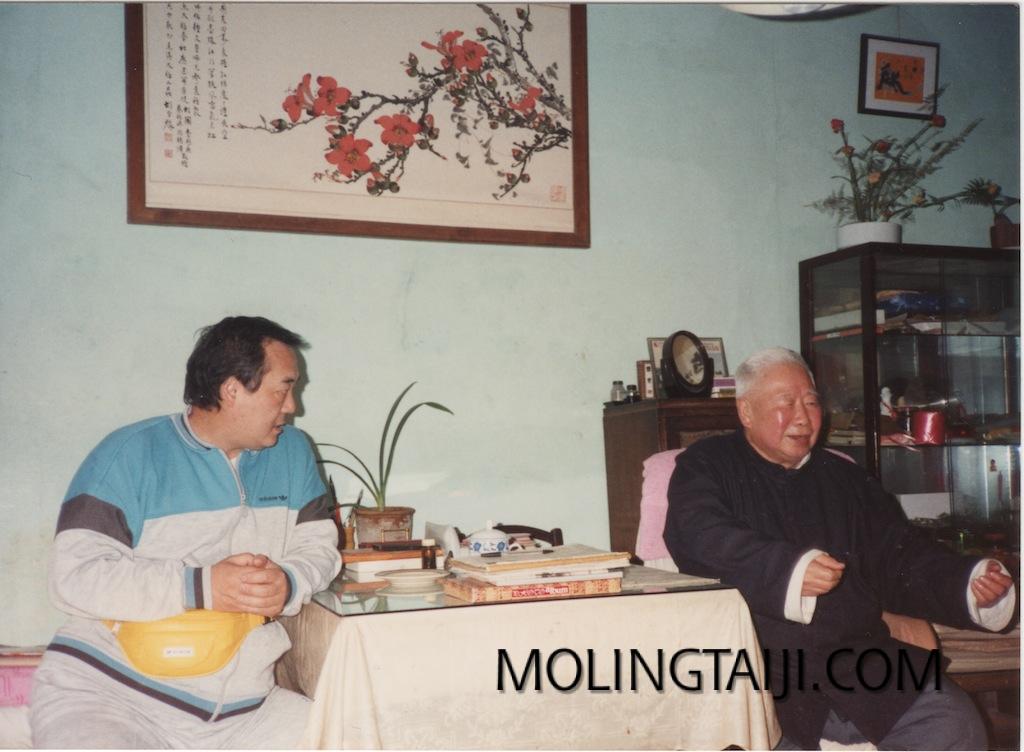
He had trained extensively with Fu Zongwen, who is now very well known in Yang style Taijiquan, and Gene Chen’s knowledge of Yang style was deep and thorough. Ma Yueliang was a famous Wu Style practitioner in Shanghai of whom Chen was very fond, and he recalled that Ma was one of the best he had known. Being that his family was from Shanghai and some of them still in residence, Chen did spend a lot of time there. He also had other contacts in Shanghai such as chairman of the Shanghai Chen Taijiquan Association Wan Wende, who was also a student of Chen Zhaokui and likely involved in Gene’s relationship with Chen Zhaokui also. He had recorded video of interviews/discussions with Wan Wende to refute false claims made by overseas gongfu practitioners about certain relationships He was quite serious about refuting false claims of gongfu in the west, and had plenty of distain for such practices.
The brothers Ding, unfortunately I know little about them at this time, but were said by him to be two brothers who had formidable and subtle skills in Wu style taijiquan martial methods, whom he was able to learn from. They may not have wanted to be public perhaps, there was some reason they were not known, but I do not know the details. Maybe someone out there knows.
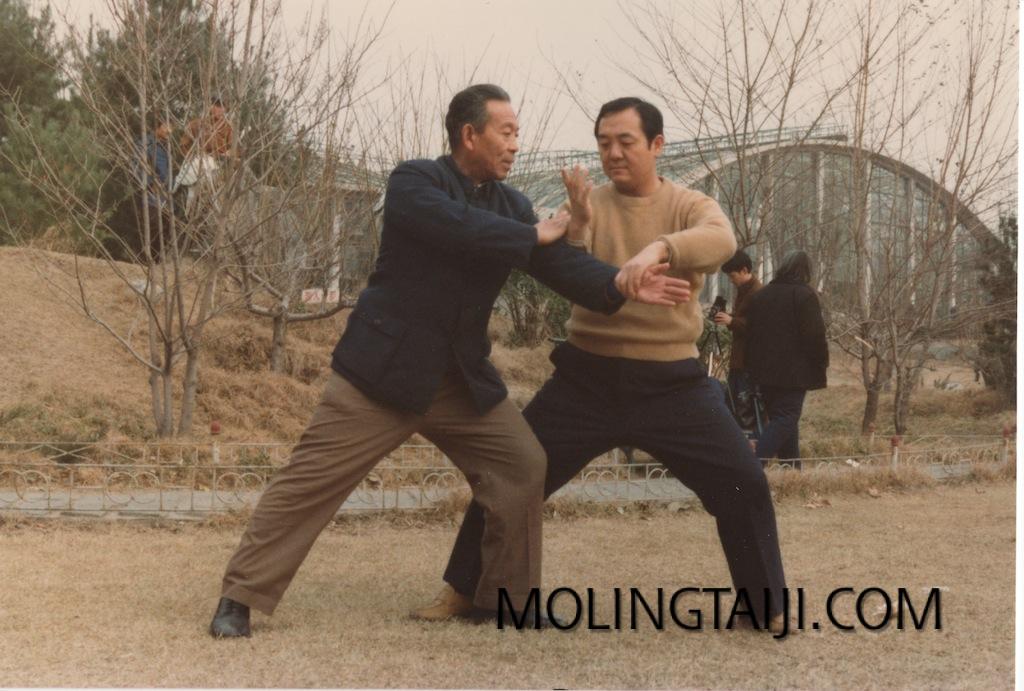
Beijing-area practitioner Wang Peisheng is very well known (now) and was also highly skilled. The story was that Gene used to sneak out when Feng Zhiqiang was out of town to train with Wang Peisheng. Feng Zhiqiang and Wang Peisheng had something of a rivalry involving some animosity between them so I doubt Chen’s training with both of them was common knowledge; it would not have been embraced by either teacher.
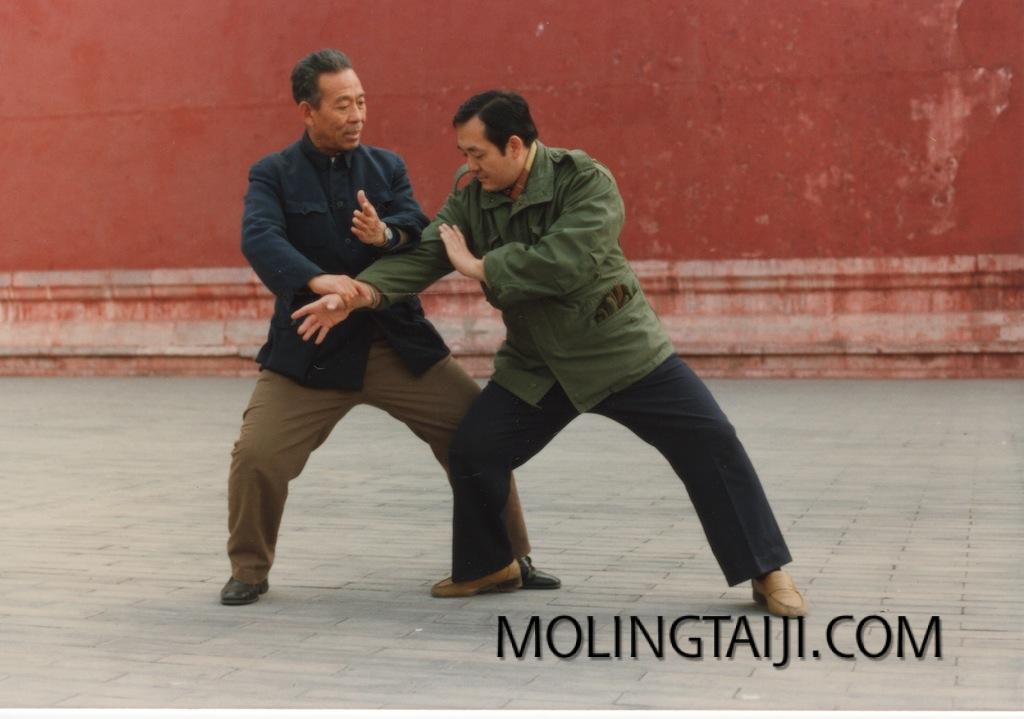
I heard a story from friends in Beijing of a martial arts meeting at which Wang Peisheng was at the microphone speaking before Feng Zhiqiang. He announced to the audience that “up next was Feng Zhiqiang”, who had learned “everything he knew” from Wang Peisheng, at which point Feng raced to the microphone and proceeded to rant angrily, saying he’d had never even met Wang.
Gene’s exploits in Wu style were not in the least without fruit. He was extremely well versed in Wu style tuishou and attack and defense methods. He had learned the method very deeply, and it populated his own tuishou and application teaching. Although at the time I was not so clear on what was what, years later in hindsight I was able to recognize what methods had come from which sources. He considered Wu Style to have retained key aspects of application that one would be hard pressed to find elsewhere, but did not prefer the short and high stance method for development.
In those days, when Gene was learning gongfu in China, the boundaries between the different family styles of Taijiquan were less important as they are thought of now. Gene was comfortable moving between teachers of different family styles, who all had different and valuable emphases to teach, all of it being Taijiquan and closely related. Now things appear to be quite different.
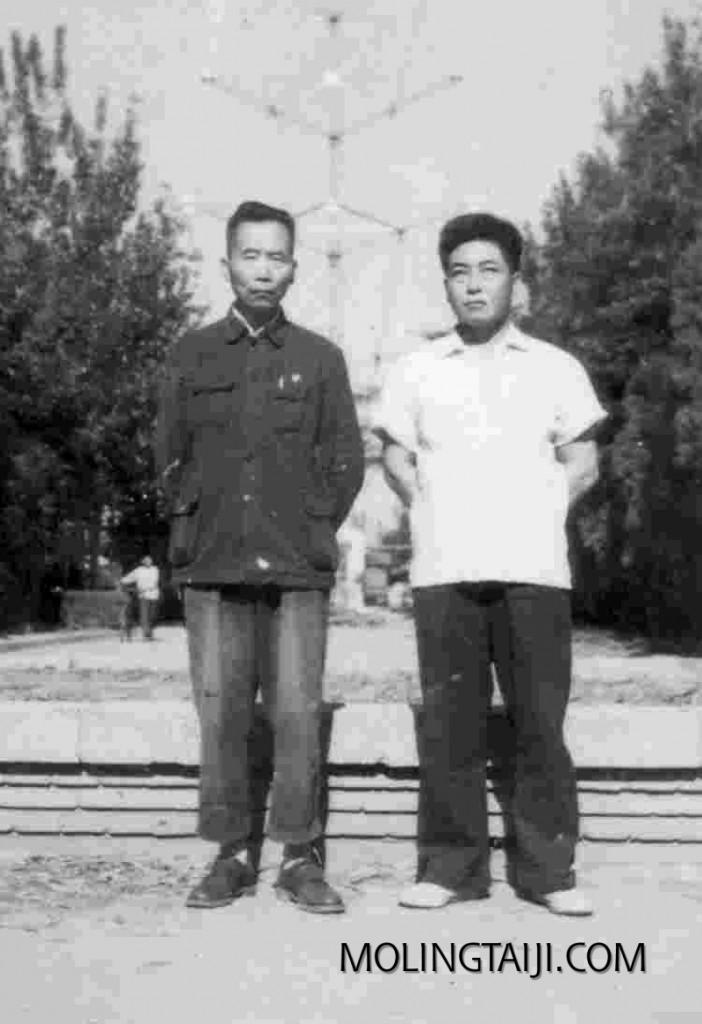
He had embarked on a lengthy project as he told us, to research and learn to authentic practice of Chen FaKe whom was I believe his idol, and with good reason. So he traveled around China to meet with, discuss with, and learn from any and all students of Chen FaKe who were still alive at that time. He was in fact quite successful, partially due to the wide net he cast. In this effort he trained extensively with Lei Muni, a noted disciple of Chen FaKe in Beijing of whom Chen said was “very very good on form.” He apparently retained all the detail and accuracy of Chen FaKe’s form teaching, and Gene had the mind to absorb it from him. In this same period he also spent time with Tian Xiuchen, another of Chen FaKe’s disciples who was known in China for his neutralization skill. Though not as well known outside of China these days,he used to teach together in Beijing as partners with Feng Zhiqiang for a significant period of time after Chen FaKe’s passing.
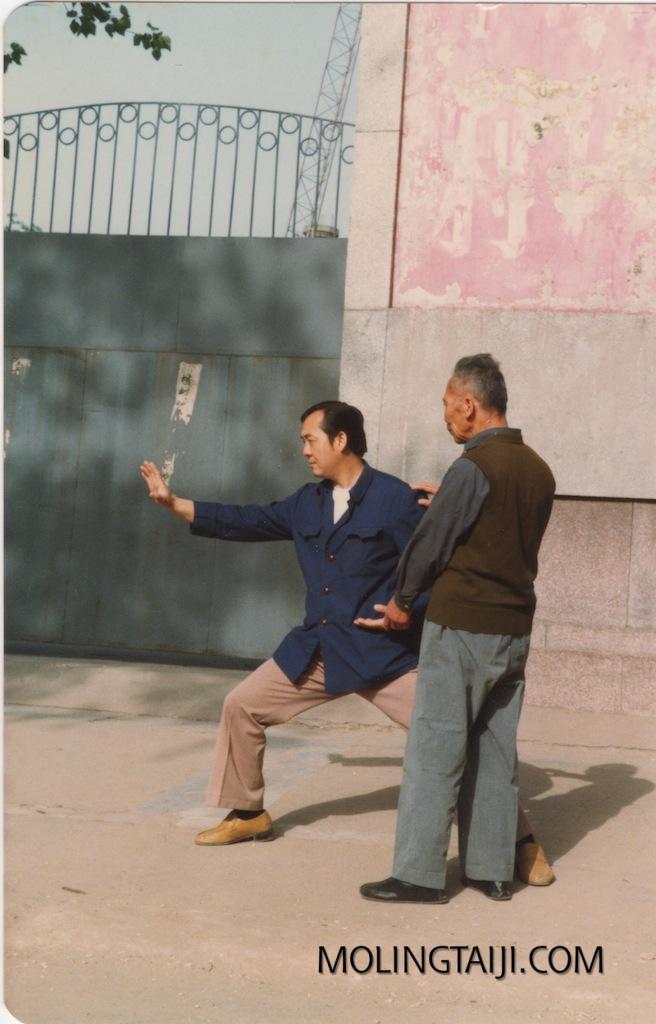
Gene also spent time with Chen Yuxia, daughter of Chen Fake, and learned sword (Jian) methods that she was famous for
He trained with Hong Junsheng, an earlier disciple of Chen FaKe who was known to have changed his practice during many years away from his teacher. He was focused on a mechanically interlocking view of tuishou and a description of the bodily action likened to the interrelation of gears, which Gene also taught to his students. Gene had many photos from his times with Hong, of which he would say, “anyone who thinks Hong was not good can look at this,” while up a photo of Hong standing still with some hapless student in mid-air many feet away.
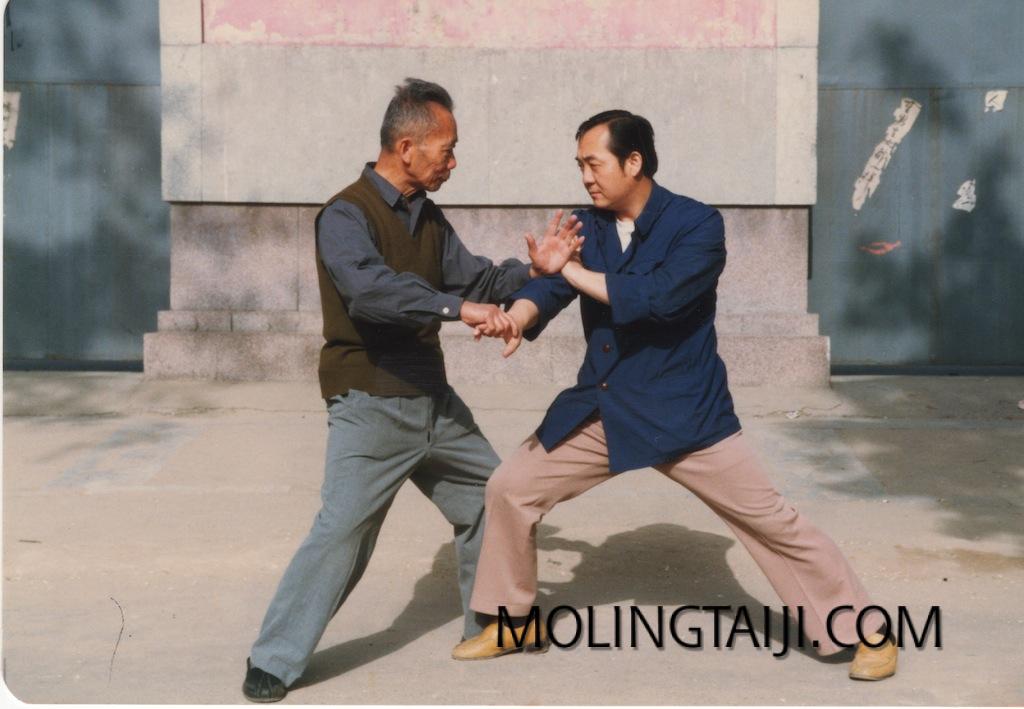
He trained with Hong to such a degree that Hong gifted him a set of his own handwritten journals on Taijiquan, which Chen brought to class and showed us. He did not practice Hong’s form specifically, but the form he did teach contained many specific methodological details that he had learned from Hong, as well as obvious elements in his tuishou and applications.
He also traveled to Henan to learn, staying in Chen Jia Gou (Chen Village), the birthplace of Taijiquan and the Chen family’s ancestral home. During the mid 1970′s and early 1980′s Chen Village was a closed area controlled tightly by the (at that time authentically) communist government. As he told it, during those days he absolutely had to wear a blue “Mao suit’” or be targeted as politically undesirable and put himself at risk. He said that one did not want to be caught whistling a tune in the late 1970′s-early 1980′s for fear that someone might think you were happy about Mao’s death. One might likely see a labor camp, and Chen was not joking when he said this.
Chen Jia Gou was an undeveloped farming region in those days; mud brick houses, no modern amenities, fields fertilized with human waste and a very rough living situation with a heavy political cloud hanging over the place. Much persecution had occurred there, including against the family of Chen FaKe, who had been a landowner. Land reform (meaning certainly persecution and killing of landowners) began in 1951 if I remember correctly. Chen FaKe and his family did not fare well, which is said to be why his first son, Chen Zhaoxu, the father of Chen Xiaowang, was shot in the back while trying to escape after being tied up, so I was told.
Gene would recount how rough life was in Chen Village. The only bathroom facility was a great wide ditch filled with human waste, with a narrow wobbly wooden board spanning the width. When nature called he said, one would just hope and pray that some big fat guy would not show up and trundle out onto that board while one was squatting and trying to balance on it. Apparently the air was very dusty in the village in those days as well, and Gene suffered from respiratory problems while traveling there as a result.
It was a restricted area, and people without a reason were not easily allowed in. Although according to Gene his grandfather had been born in Chen Village, this may not have been a desirable piece of information to share with authorities at the time, and in any case would probably have been too far back to prove with a paper trail. How he got access to Chen Village in those days in an interesting story.
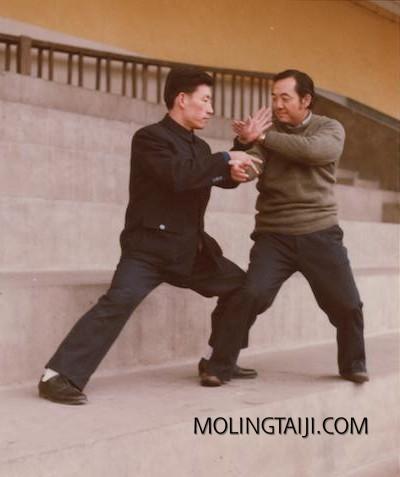
What actually happened was that he had become close friends with Chen Xiaowang. He was a local who practiced his family’s Taijiquan and although from a famous family, was not at all well known at the time. Gene respected him a lot for his dedication and told many stories about him, but in these days, Chen Xiaowang was not any kind of star, but a friend of Gene’s who was on a similar path of seeking great skill in gongfu. Chen Xiaowang was the person who helped Gene get into Chen village. As Gene told it, Chen Xiaowang faked papers for him showing evidence of a family connection to show the authorities and he was in. Chen Xiaowang was also a source of inspiration and knowledge for Gene. In the 1990′s when Chen Xiaowang began touring the US he would drop by and visit our class in San Francisco, informally.
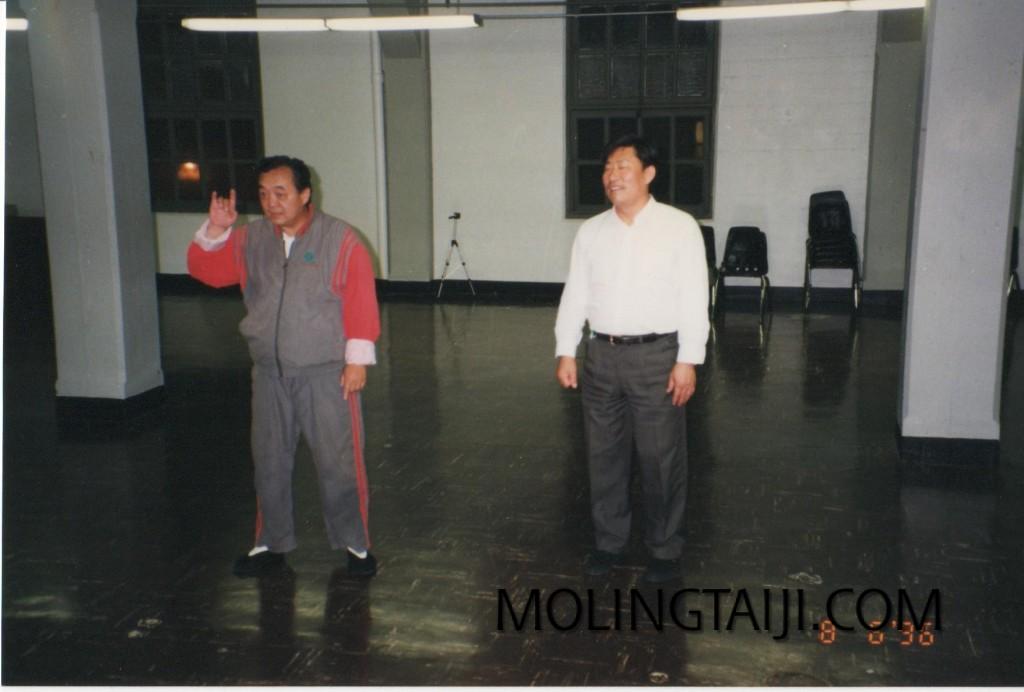
Gene Chen had also forged a relationship with Chen Zhaokui, Chen FaKe’s surviving son. He said he had learned important things from him, but I am not clear on what they were. It was Chen Zhaokui himself who arranged a dinner with himself and Feng Zhiqiang so he could introduce Gene to Feng for instruction.
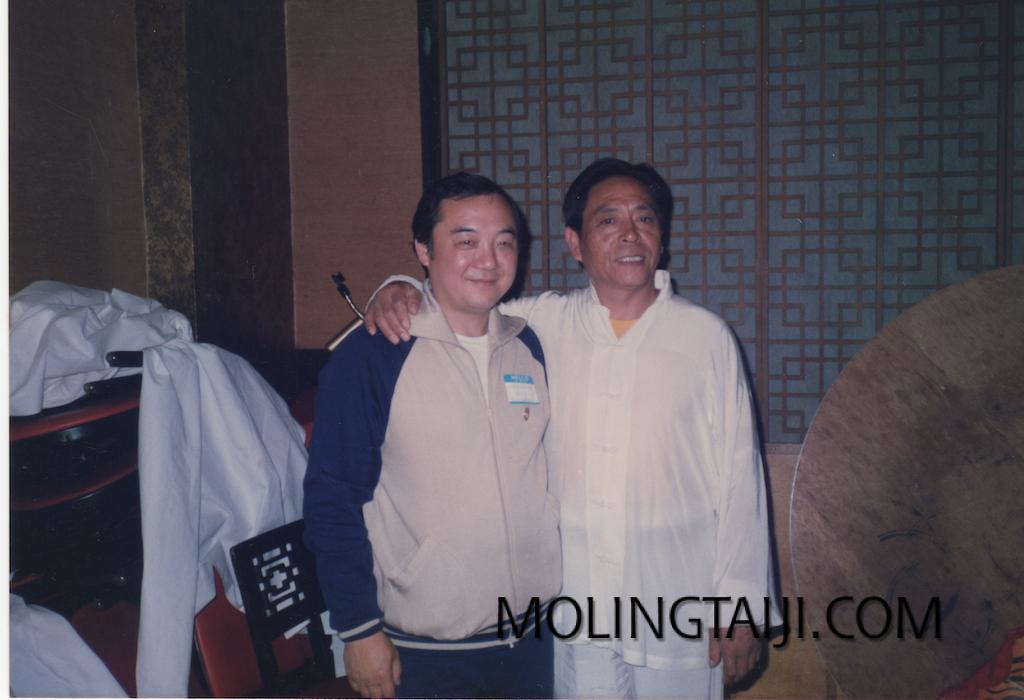
Although I cannot verify it, my thought is that as it was 1980 or so, Chen Zhaokui’s health may already have been in decline, and he may have been unable to commit to instructing Chen properly. He may have believed that Feng would be a good direction to send Gene. It is clear that Chen Zhaokui and Feng Zhiqiang were on good terms and this was a generous action on the part of Chen Zhaokui. Gene must had previously spent some significant time with Chen Zhaokui already, or such a meeting and introduction would never have happened at all. However, Gene Chen did not teach nor really practice Chen Zhaokui’s personal method, which I later came to understand intimately, so it is likely that their meetings may have consisted more of research than physical method teaching.
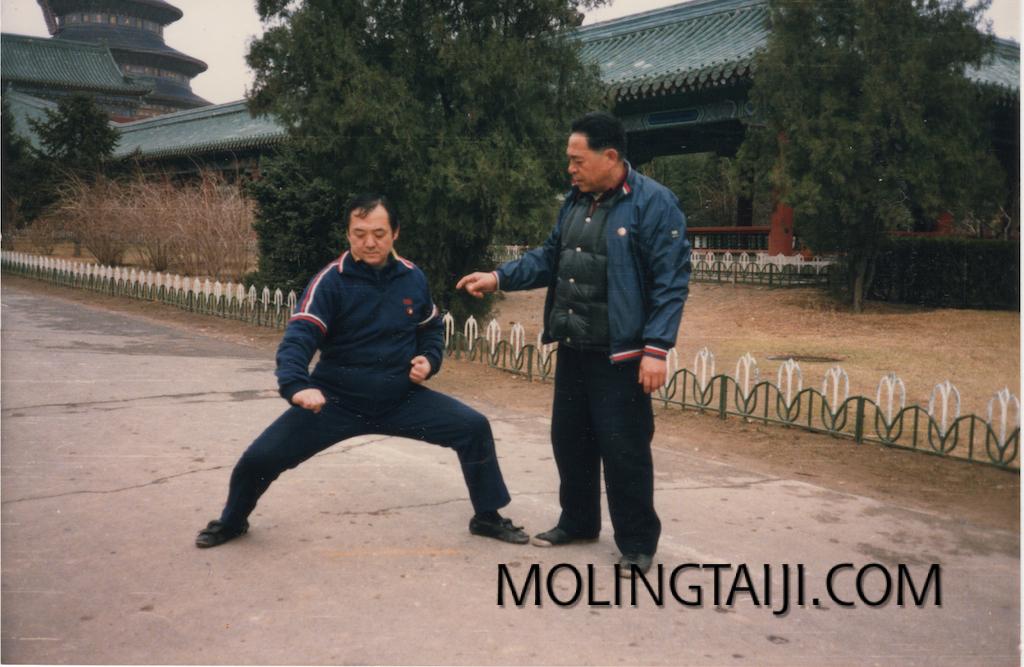
After being introduced to Feng Zhiqiang formally by Chen Zhaokui, Gene began to learn from him. Chen Zhaokui passed away in 1981 and Feng’s recommendation could not have come from a more well-respected source. Gene learned from Feng Zhiqiang at a time when Feng was not well known, and was employed working as a machinist in Beijing. As he told it at that time there were a few people who wanted to follow Feng around when he practiced but he had no formal students and was not seriously teaching at all. As Gene told it, his family looked down on his Taijiquan, considering him to be wasting his time, but opinions changed to high approval when many of his relatives had their own refrigerators by the late 1980′s as a result of his teaching earnings.
It was Gene who convinced Feng to begin formally and publicly teaching, accepting Gene as his first disciple. Gene’s instruction with Feng Zhiqiang was private, and Feng was such a person that private meant secret. Apparently they would often try to make a getaway from others who might be interested and find some out-of-the-way place to practice. When I later had the opportunity on Gene’s introduction to train with Feng Zhiqiang, I saw this same spirit, as he would take us to a private spot somewhere in the park whenever he wanted to seriously teach something.
Gene trained with Feng Zhiqiang in a long-term serious capacity, and told his students that regarding usage and application, he got most of the really formidable methods from Feng Zhiqiang. He was full of respect for Feng, such that the second time I traveled to learn from him with Gene’s disciple Henry Wong in 2000, he made sure that we told Feng he considered his art to be “Peng Quan” which was a high compliment, meaning it had so transcended the mundane rules that it was a pure expression of Peng and power in all movements. This in my experience was quite true. Gene’s students, when meeting him at the airport from his many month-long stays in China to learn with Feng, would routinely find him getting off the airplane with the side of his face all in black and blue from Feng’s instruction. This was the nature of his education in those days.
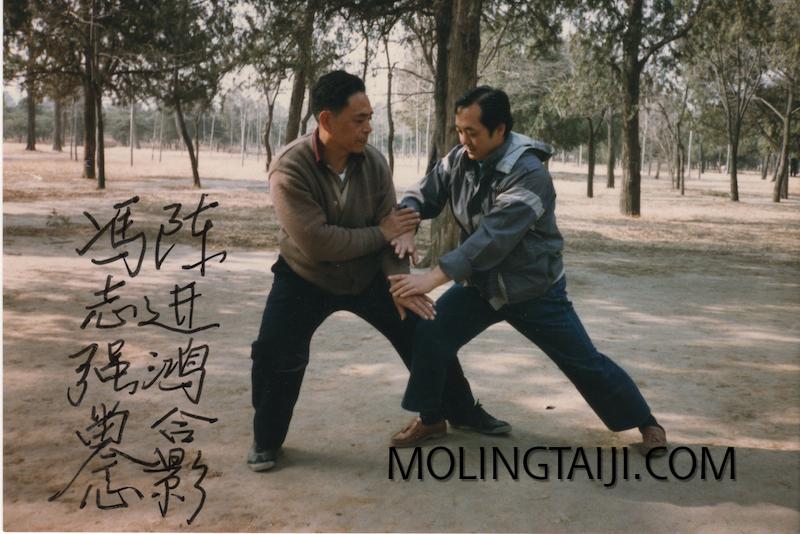
Although he was Feng’s disciple, his own practice form, which he taught, was not limited to the form methods of Feng Zhiqiang, but had elements from Lei Muni, Hong Junsheng, and some others that he had apparently learned from in Chen Village as well. There was a family in Chen Village that he learned from who had formidable skill and knowledge but were terribly blacklisted politically at the time. He agreed not to release their names and never did. When he brought some of his disciples to Chen Village in 1990 for a commemoration ceremony that he and Chen Xiaowang organized, when his students demonstrated some old-timers commented something along the lines of “Hey that’s my move!” Gene Chen’s name would be placed at that time upon a stone tablet in Chen Jia Gou of high-ranking practitioners of the quan.
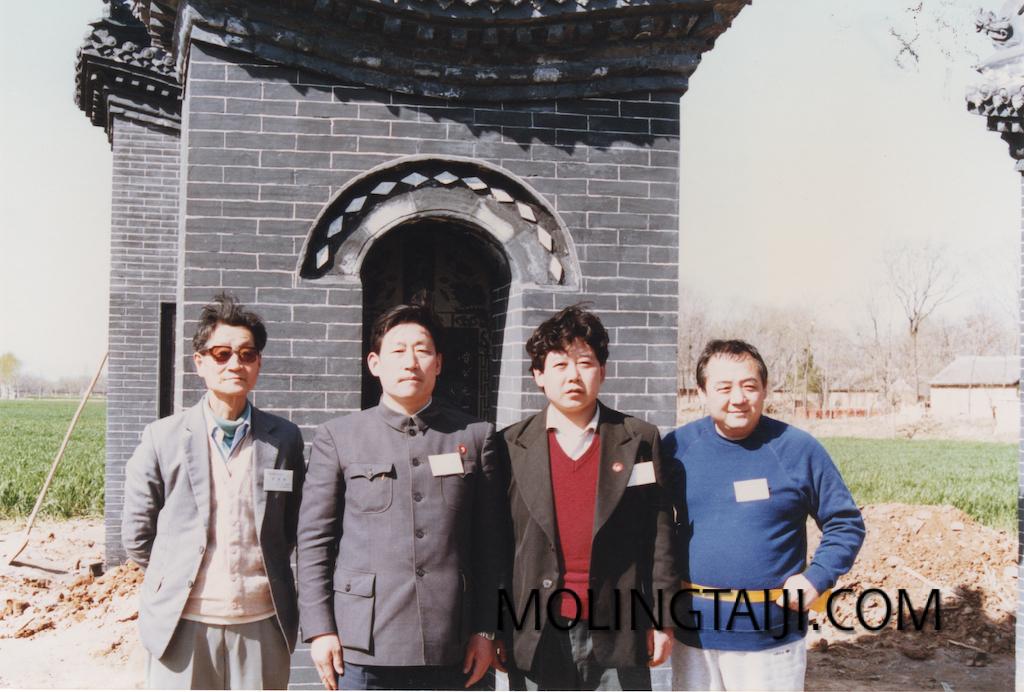
In his earlier years teaching in San Francisco, Gene had taught some students in Zhu Gar Kuen and there are a small number of individuals out there who still retain the art they learned from him. However after his extensive journeys in taijiquan he eventually made the choice to stop teaching Zhu Gar and teach only taijiquan. I asked him why he did this and his response was that Zhu Gar, constructing and requiring a rounded and hunched posture of the back and shoulders for its power development, was in the long term detrimental to a person’s health. I think he was also correct in that view. While a very formidable fist system, health is not its emphasis. He also felt that as a long-term practice, Zhu Gar was too aggressive. Its methods are designed to kill or maim without compromise, and he felt that there should be a middle ground. He was deeply interested in the philosophy guiding and developed from martial arts and he felt that such a violent and aggressive practice was not good for a person over the long-term, as it made them angry and wound up. He felt that Taijiquan, with its stress on the balance of energies and a natural harmony within and without, meaning physically and mentally, was more beneficial to a practitioner over the long term. Again, I have to agree with that assessment, but each will have their own preference.
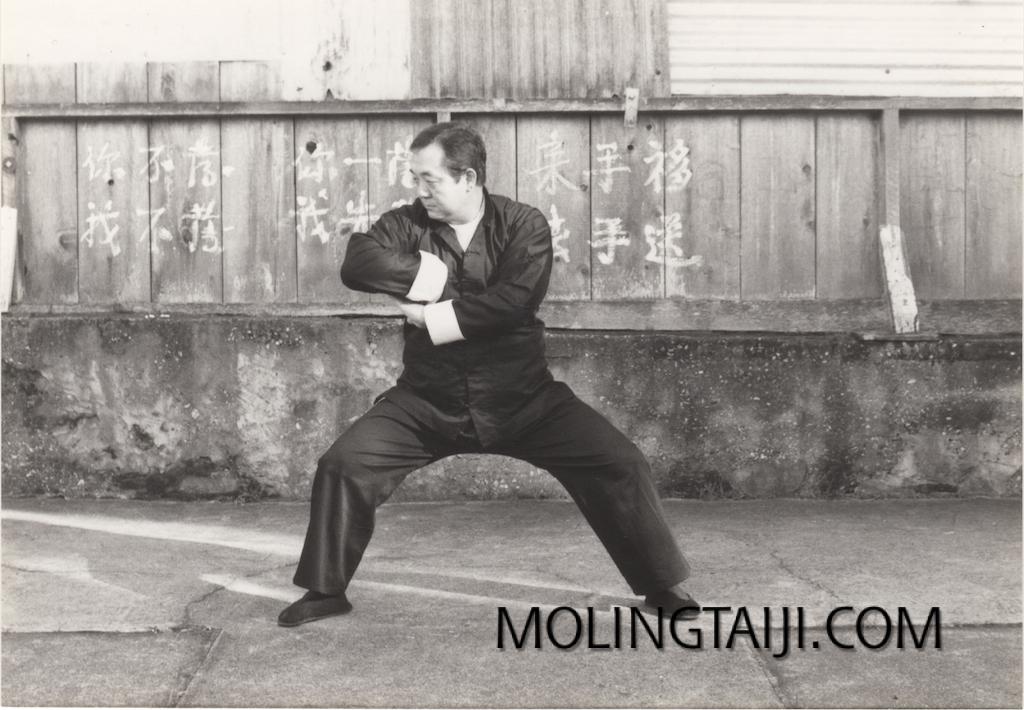
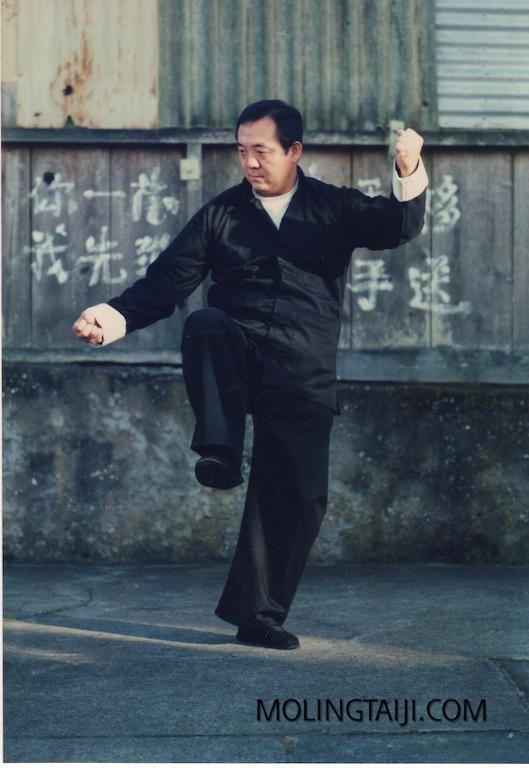
Most of his later students did not learn Zhu Gar, though he had a good-sized class of Taijiquan students who would come and go and come again over many years. At the time he was one of the few who was teaching traditional martial applications in Chen Taiiquan in Golden Gate Park, and the US as a whole.
His teaching covered the subtleties of spirals, and a flowing approach to the fundamental energies cultivated in form practice and how they were to be applied to martial usage. I was lucky (or unlucky depending on your viewpoint) to find him at a time when he had been covering basics in a traditional way for many years and had just become impatient to start unraveling all the gems of application and tuishou he had stored up over the years. He was actually a very conservative teacher, but his enthusiasm for martial arts was like that of a little boy with a new toy and at this time he simply could not keep it entirely contained. While he did try and succeed in many cases to keep things secret, he also began at this time to bring more and more complex and subtle tuishou and fighting methods into the light in his teachings.
I was 25 years old when I started with him and I was—perhaps unfortunately considering the socio-political implications it would have on my place in that group—a very fast learner and entirely focused on his class and teaching at that time in my life. Gene’s enthusiasm at that time became such that he was teaching, or trying to teach the intricacies that he knew to those who could learn them, but for many years in the past he had not been so forthcoming, instead focusing on the basic building blocks.
A number of his long-term disciples had trained with him for many years and themselves were seeing these methods taught just then for the first time. They were not thrilled at the prospect of any young kid having access early to what they had not previously been taught. To say the least, there was significant friction and conflict that resulted from the clash between Gene’s unstoppable enthusiasm for gongfu and learning, and feelings of status and entitlement on the part of some students, who in a practical sense ran the school.
Regardless of conflict during those years I was able to learn a great deal of extremely valuable and special Taijiquan practice methods that spanned Yang to Wu to Chen Style. I was able to use this as a basis for further research and learning of applications from future teachers and bridging disparate stylistic gaps in method.
He taught a demanding level of accuracy and depth in form practice that was like a glossary of fundamental jin, intention, and shape in form. This would later serve as a foundation for learning additional complex and challenging form methods of Feng Zhiqiang and then Chenyu without being lost in the woods of stylistic differences. When learning later with Feng Zhiqiang and then Chenyu, in both cases I constantly encountered parallels or even repeats of things I had learned from Gene Chen, although done differently. In some cases there were simply differences of emphasis, and in others of content, but I was fortunate to have learned from him the ability to pay attention to precision, subtlety, and grace in the artistry of Taijiquan method.
Without meeting and learning from Gene Chen I would not have developed the critical eye for detail to progress in Chen Taijiquan. I was able to learn from the great Feng Zhiqiang thanks to his introduction, which was in fact his own idea. My first knowledge of my future Sifu, Chenyu also came via Gene, who knew him as a boy running around Chen Village causing trouble apparently, and referred to him as “Xiao Pang” (little fatty, a common nickname for cute little boys). Later Chen explained that Chenyu was the one with a special method in gongfu.
For his tireless teaching of detail, which he used to liken to “spoon feeding a baby, bite by bite” I will be forever grateful and hold fond memories.
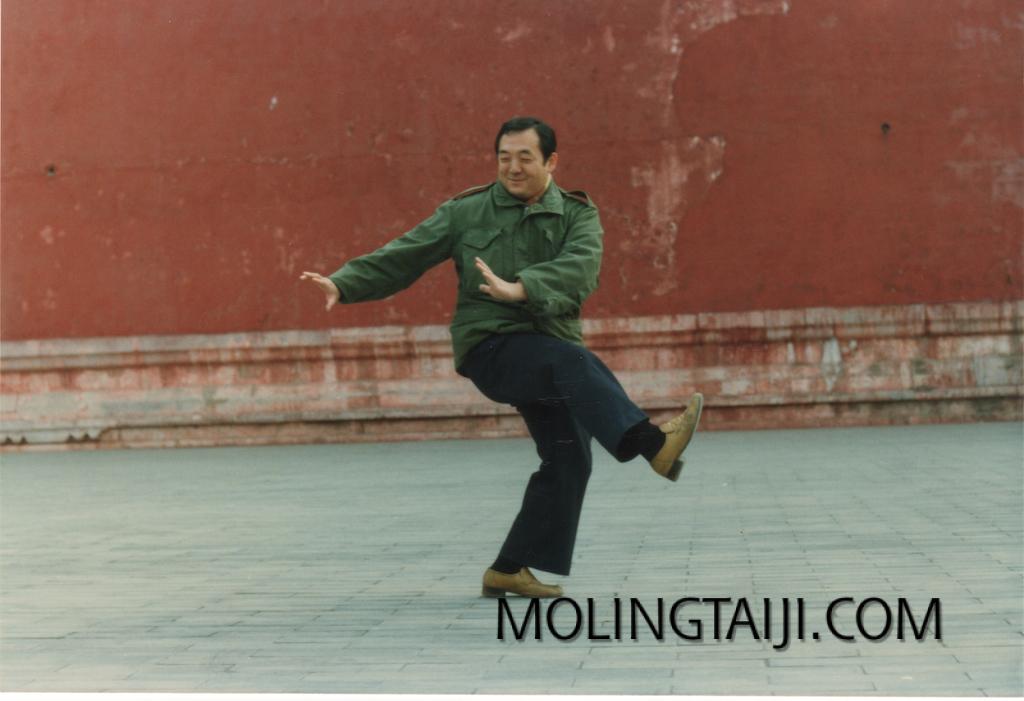
I went on to train with others and become disciple and lineage holder through Chenyu with a different method, but I still practice and teach many things that I learned from ‘Gene’ Chen Jinhong. His disciple and my good friend, Henry Wong still teaches his method in Golden Gate Park in San Francisco.
If other students/disciples of Gene Chen would like to contribute to this section please feel free to send anything via the contact form on this site. More may follow. Thank you.
Marin Spivack 2013
** More information on the ‘mysterious brothers Ding’ contributed by Jon Xie in Shanghai:
“Just wanted to add something about the Ding brothers, might help put
the pieces together for you. Ding Jinshan (丁晋山) and Ding Deshan
(丁德山) were both disciples of Wu Gongyi here in Shanghai, they
carried on what is sometimes called the Wu square form/guanjie quan
(关节拳) and were known for their skill in pushing hands. There
are still several of their students and grandstudents teaching in
Shanghai.
Hope that helps,”
